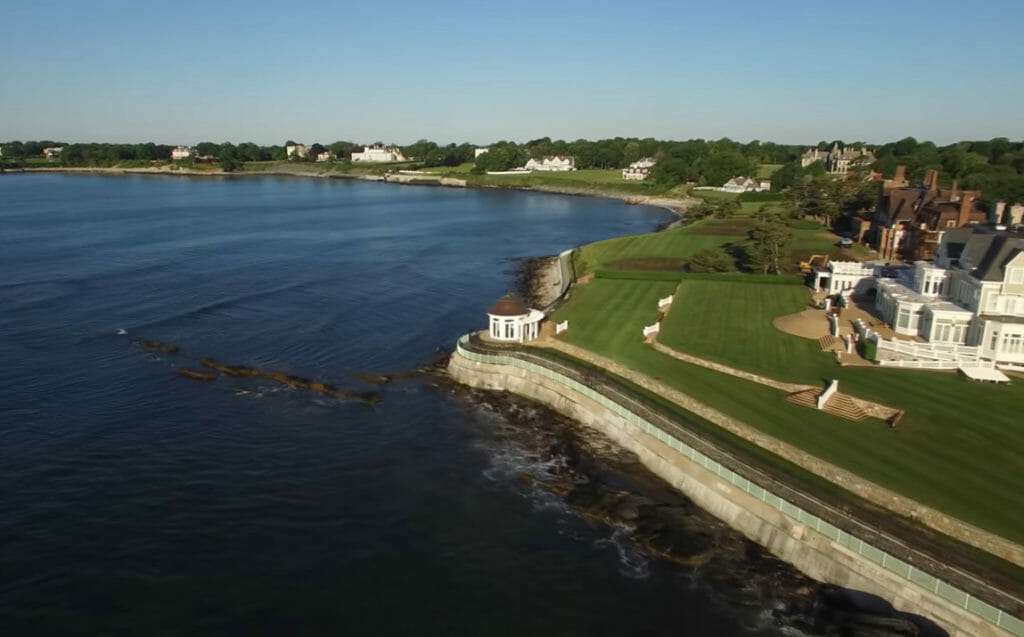Next time you’re in New England with some time on your hands, definitely swing by Newport, Rhode Island.
This city by the sea is home to great cuisine, museums, architecture, and sport. And, as one of the oldest communities in America, it’s rich in history. During the Gilded Age, some of America’s wealthiest families built their summer mansions – America’s castles – in Newport. Last February, “Creative Living” visited Newport and spoke to members of The Preservation Society of Newport County and Discover Newport to find out some of the best things the town has to offer. Here’s what she found.
You can watch the episode here, or read the transcription below (edited for clarity). For more from Newport, watch when Driven visited Audrain’s Newport Concours & Motor Week.
Click any of the linked sections to skip straight to it.
- Discover Newport
- Life of the Newport Mansions Domestic Staff
- Newport Mansions Architecture
- The Vanderbilts in Newport
Discover Newport
Evan Smith, President & CEO of Discover Newport: (5:10)
It’s really wonderful to have you here. You may not know it, but you’re on an island. And so we have island life here. The city of Newport and two other towns are on Aquidneck Island. There are 25,000 people in the city, and 58,000 people on the island. That’s our winter population. But we are a four-season New England town. That population swells to over 100,000 in the summer when we hit our peak travel season.
The Newport Mansions deserve so much credit for having saved some of the greatest architecture in America. There was a very difficult chapter of history here where we lost a lot of this great architecture. And without the Preservation Society, we would have lost a number of these great homes forever. They have been working tirelessly to preserve these beautiful homes. And so the work that they have done is absolutely priceless and saving what I consider to be some of the best architecture in America. A number of Americans have seen the TV show Downton Abbey, and they’ve fallen in love with Downton Abbey. And they’ve seen the great architecture of the show.
But many of them may not be able to visit England or the rest of Europe to see castles. Newport, Rhode Island is a place that they can come and experience America’s castles. This was a unique chapter of American history where this extraordinary architecture was built. And so for people to come here and see the art and architecture and the landscaping that went into these properties is just so inspiring.
Jane: Now, these mansions – we know they’re not open 24 hours a day. So we have to do other things here in Newport. What else would you recommend? (6:40)
ES: Well, when someone’s considering a visit here, they may have a vision of a New England seaport. You’re thinking of fishing boats, you’re thinking of lighthouses you might be thinking of the white church steeple, on the harbor, Newport is all of that, and much more.
This is a city where literally, history, sport, and culture come to life. So they can visit other attractions like the Tennis Hall of Fame, they can visit Fort Adams, which is the largest fortification on the American east coast. We have wonderful car museums here.
The list of attractions is so long, but they can go shopping, we have some of the best restaurants in America here… So it’s a really fabulous vacation for people. And we hope people will consider a visit to Newport, Rhode Island.
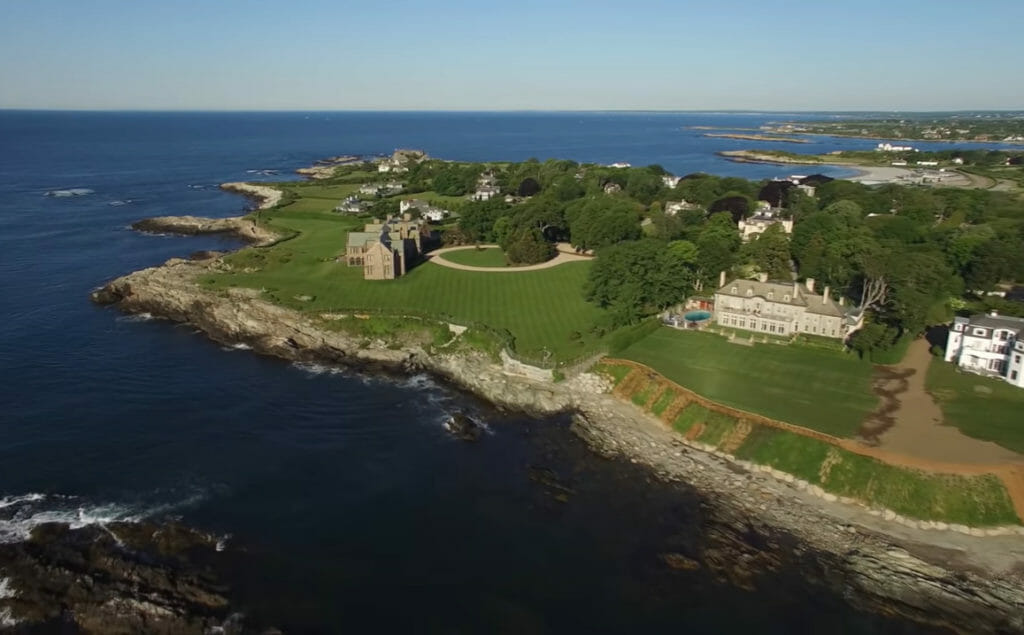
And I’ve heard about the Cliff Walk. I heard that’s a do-not-miss. Explain it. (7:26)
The Cliff Walk is a path. It’s a footpath – a hiking trail – that’s 3 1/2 miles long, and it goes along the southeastern coast of this island. And it gives one a view of not only the ocean and a very rugged coastline, which is very beautiful, but you’re also going to see all the great homes along Bellevue Avenue.
So when we’re planning our summer trips, what’s the best advice you can give for a first time visiting Newport? (7:50)
Three things you really have to do. One – you have to see the great Newport mansions. Two – you need to get out on the water and experience the city by the sea. And three – you have to try some of our great food – our seafood. Okay, so if you get those three things done in your travel checklist, you’ve got a good start going.
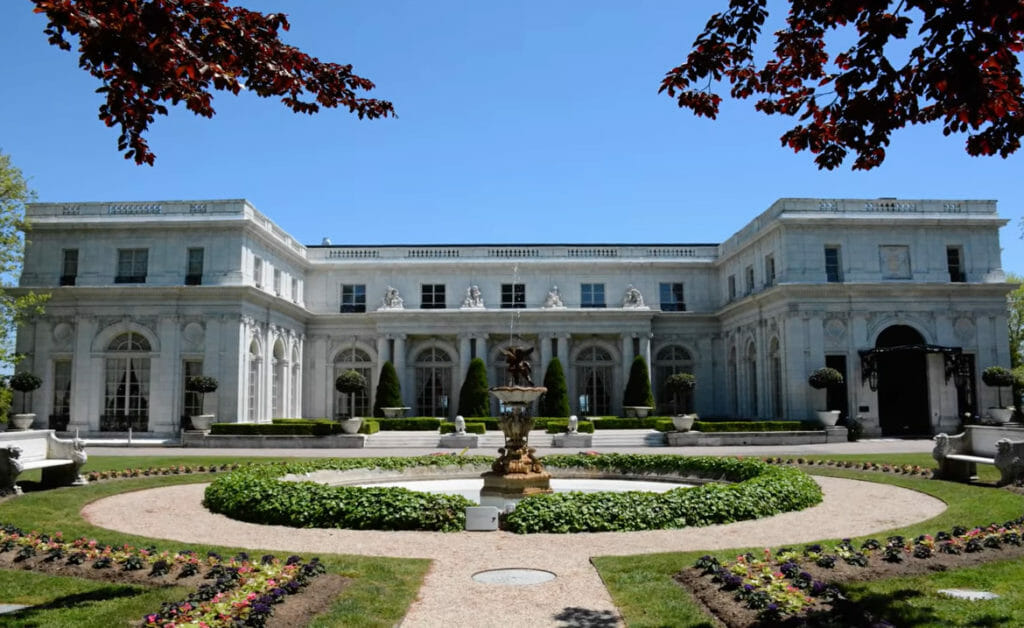
So, obviously, we went to the Newport Mansions.
Life of the Newport Mansions Domestic Staff
The Gilded Age, made popular by Downton Abbey, refers to a period from the late 1860s to 1896.
This is a time where the American economy grew the fastest it ever had in history. And with that growth came enormous wealth, which produced some of the most opulent estate houses in the US and Europe. And some of those are right here in Newport, where you can find almost 400 years of American history.
The mansions of the Preservation Society of Newport County are a highlight of that history.
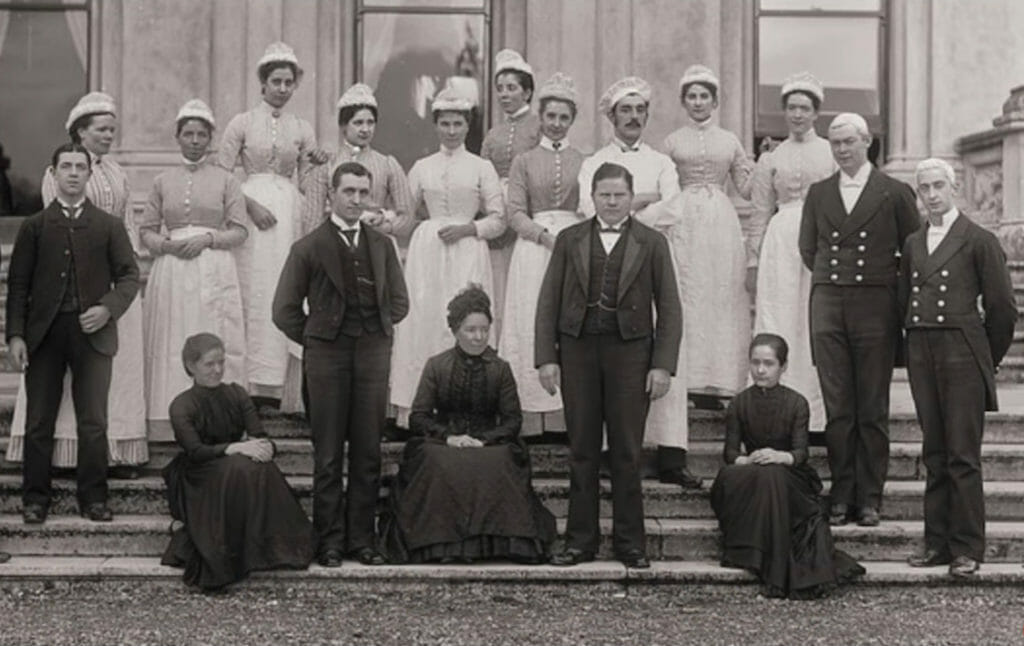
Trudy Coxe, CEO and Executive Director of The Preservation Society of Newport County, and John Rodman, Director of Museum Experience, and Ashley Householder, Curator of Exhibitions discussed the 11 Newport Mansions, their domestic staff, their architecture, and the historical significance of the Vanderbilt family‘s life in Newport.
John Rodman: (1:37) The stories of the houses are the stories of the rich and powerful, who built them, and the domestic staff who made the houses operate. Without domestic staff the houses were lifeless.
Trudy Coxe: (1:50) Downton Abbey teaches us a lot about servant life in England. And some of the servants here were Newporters, who came to work for the families. And then, after the summer season was over, would go back to their homes here in Newport. And then others were transported up from New York or Philadelphia.
JR: (2:07) So there might have been as many as 27 domestic servants working on the inside of a house as many as 16 tending to the grounds, handling the horses, handling the carriages. And so the domestic service living in the house was only part of the total domestic service staff.
The early 1900s were a period when there was labor trouble everywhere and Newport was not immune from it. As an article from the New York World from July 6, 1902, plainly indicates, The Elms had its own strike. And the Berwinds had the standard response: they fired the entire staff.
Domestic service was hard work and a hard way to make a living, but it had its rewards, especially for immigrants. This is an example of one of the really well-furnished servants’ rooms that you’ll see when you take a Servant’s Life tour at the Newport mansions.
We’ve recreated what we believe was Nelly Lynch’s bedroom. And Nellie Lynch was in service at The Elms for a number of years. And we know a great deal about her. So when you take the Servant Life tour here, you’re really going to get to know her from the memoirs of herself and her nieces.
An important part of the quality of life for someone in domestic service was the quality of their own domestic facilities. There are three such facilities on the service floor at The Elms. Now in the era when the great hotels were opening, like the Plaza in New York, if you’ve got a letter of recommendation from the Berwinds, or the Vanderbilts or the Astors, saying you’ve been in domestic service for 18 years, and I run the Plaza Hotel, you bet I want to offer you a job. There was tremendous upward mobility for people, not only there but also in the great department store chains.
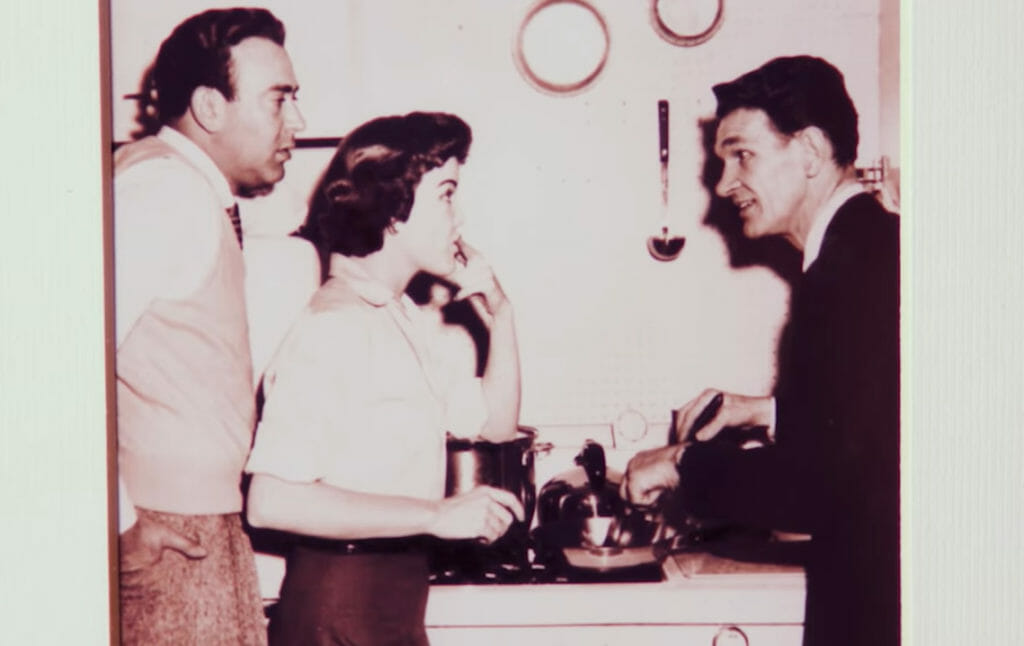
Rudolph Stanish, who came to be known as the Omelet King, developed quite a reputation for making the perfect omelet, and it made him a national celebrity. In fact, there’s a photograph with comedian Carl Reiner from the 1950s.
If it can be said that the butler’s pantry was the nerve center for any great house, then I guess the kitchen would certainly be thought of as the soul. And chef Paul Pascal for many, many years presided over this incredible kitchen very much like the kitchens in the great houses, not only of Newport but New York and elsewhere.
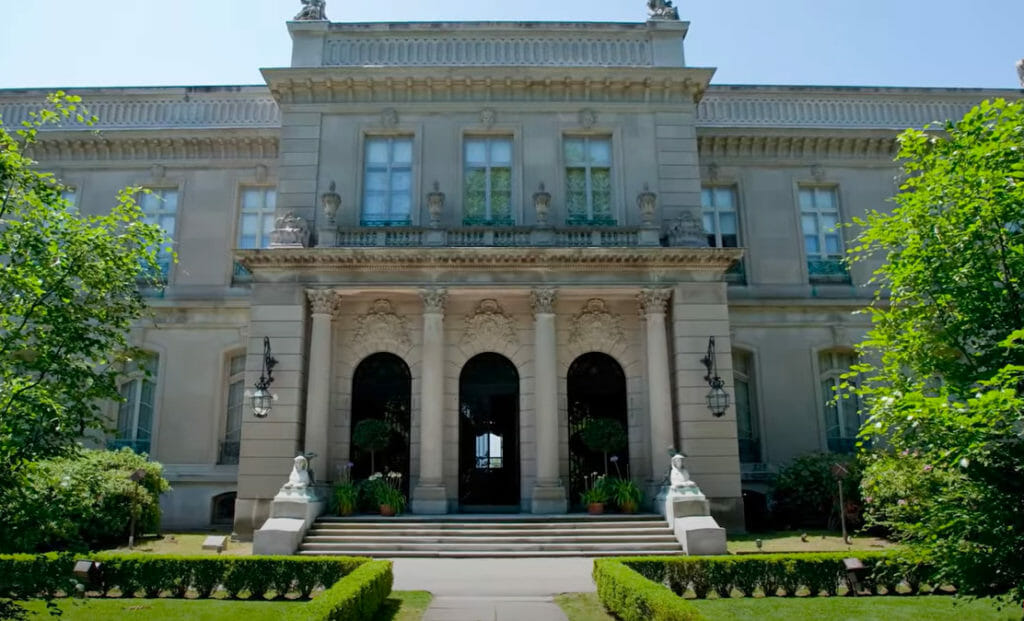
Newport Mansions Architecture
Jane: The diversity of architecture and design reaches all the way back to before the American Revolution. (14:10)
Trudy Coxe: (1:15) The importance of preserving 250 years of architecture here in Newport is immeasurable. Because Newport is really a laboratory. If one is interested in American domestic architecture, this is the place to come. It’s an immersion in architecture. And that’s why I think the work of The Preservation Society in taking care of so many houses – 11 of them – is so important.
John Rodman: (9:33) The Preservation Society of Newport County maintains five critically important historic houses that are identified with the Gilded Age, beginning with Chateau-sur-Mer, which is actually a Victorian, but it was the first great stone mansion along Bellevue Avenue in Newport. And then there is Rosecliff, The Elms, Marble House, and The Breakers.
TC: (9:55) Given the fact that history is not taught in American schools and the way it used to be, historic houses like ours really become the classroom for people to learn about the history of our nation. So I think we play a very important role.
JR: (14:15) You can experience 250 years of American history, architectural as well as interior design and decorative arts by visiting these properties.
They’re important and impressive, not only because of their size or because they’re built out of stone, like Rosecliff, or Marble House. There are other houses – we call them the smaller houses such as Kingscote, or Chepstow, the Isaac Bell House or Hunter House – which are smaller and earlier, but equally important.
Kingscote was originally conceived by the American designer, Richard Upjohn, for a Georgia plantation owner in the 1840s. George Noble Jones would later sell to the King family, and they would bring in Stanford White to expand the building in a very interesting way. They split the building in half. [The current sides are] originally Upjohn’s work, but in the center, you have the new wing, which was Stanford White’s work. And in there we see some incredible uses of Tiffany glass.
TC: (15:11) Every house, from Hunter House all the way up to Chateau-sur-Mer and the Isaac Bell House represents a different part of American architectural history, and a different part of American history in Newport as well. Built in 1748, we think, Hunter House is really an important colonial building, and it’s where The Preservation Society of Newport County got its start as an organization.
Kingscote is an interesting building in that the room that was inserted into the building is probably one of the most important rooms in America today. With the Tiffany blocks on one wall, and a lot of accouterments by Tiffany himself.
JR: (16:03) We always look for interesting design features when we’re touring the houses of the Preservation Society. In the Isaac Bell House, you see a couple of those very interesting design features. One of them is the floor-to-almost-ceiling windows. The beautiful trick is that they will open all the way up. So the windows will turn from floor-to-ceiling windows into floor-to-ceiling doors. Indoors and outdoors, moving back and forth, the great movement of light in the house… It’s an important part of a design school, called the shingle style.
Shingle style predates the emergence of Frank Lloyd Wright and the prairie school. But there is a real mixture of many of the same kind of design elements, particularly the use of materials from the earth itself.
Houses like the Isaac Bell House, as well as houses like Chepstow, Kingscote, Hunter House, and even Brayton House at Green Animals, are houses that give us that feel for American architecture in an earlier age – a sometimes simpler age, but also a sometimes much more sophisticated age.
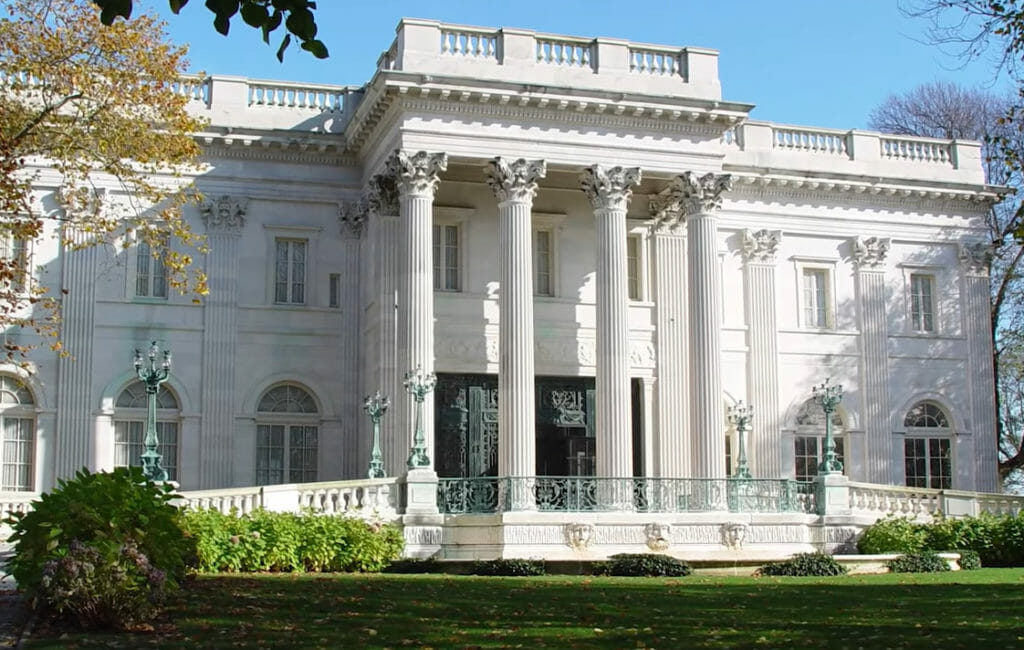
The Vanderbilts in Newport
Jane: One of the most opulent Newport Mansions is Marble House, which was a summer home for the Vanderbilts. Now, before Newport became known as a place where wealthy people summered, it was a seedbed for religious and ethnic tolerance in America. And the women’s suffrage movement can include Marble House among its roots. (18:02)
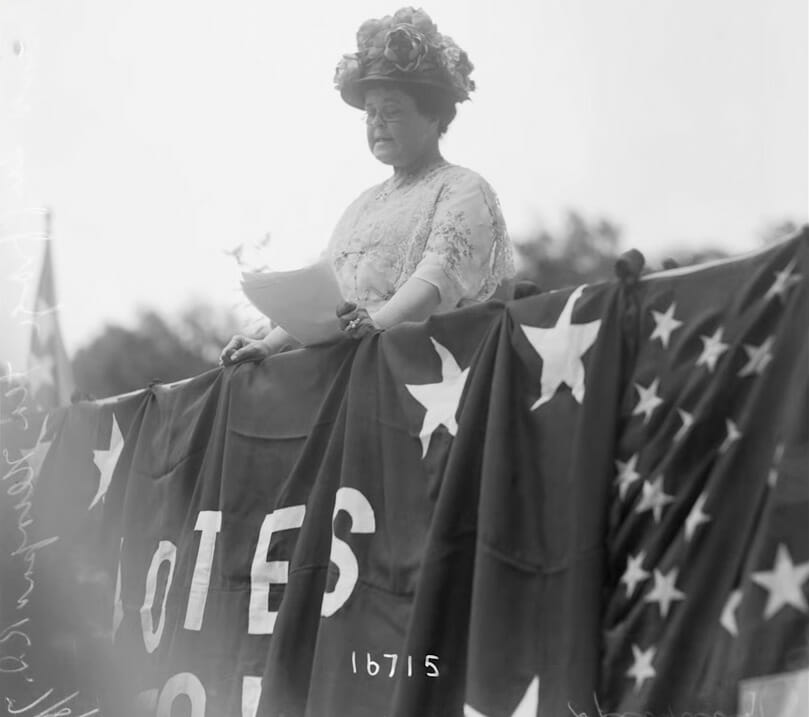
JR: (18:29) This year our annual special exhibition features the lives of Alice and Alva Vanderbilt, and their daughters Gertrude Vanderbilt Whitney and Consuelo Vanderbilt Balsan, in the special exhibition, Becoming Vanderbilt.
TC: (10:43) Alva Vanderbilt came from a middle-class family in the south. The family, during the Civil War, went to France, which was not unusual to escape the ravages of war. She became a Francophile and came back to the United States, was fortunate enough to marry William Vanderbilt, one of the richest men in the world. And then went on to really make a stamp for the Vanderbilt family by building two glorious houses that were designed by Richard Morris Hunt, and Alva.
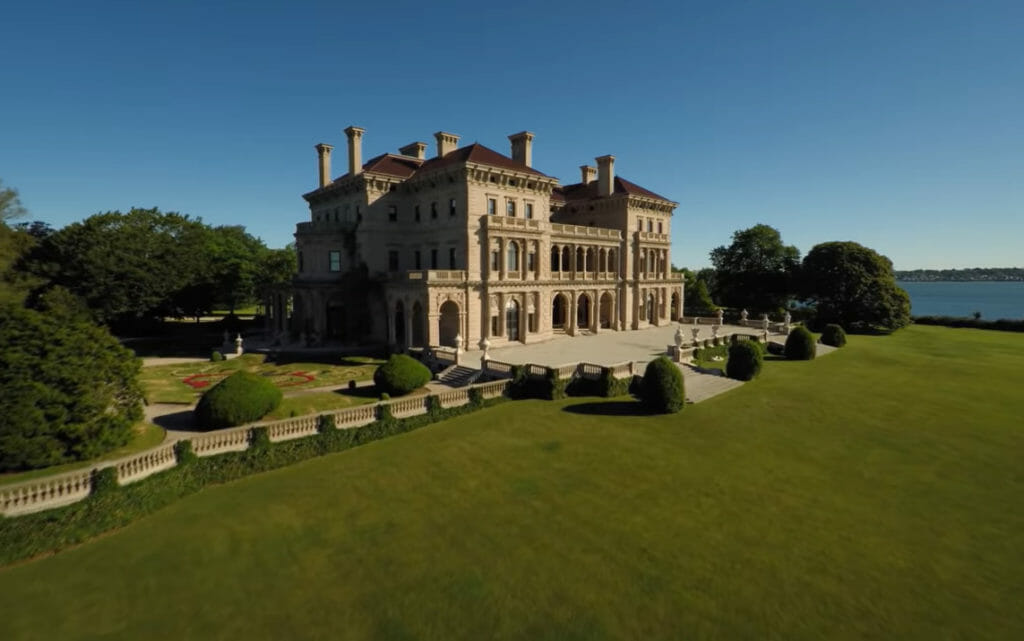
Ashley Householder: (18:42) The Breakers (the other Vanderbilt family home in Newport) features a portrait of Alice done by the Spanish painter Raimundo Madrazo. She and her contemporary Alva Vanderbilt, who of course built Marble House, were obviously of the same family – they had married two brothers – but they were very different women. So we thought placing them in the context of the Gilded Age here in Newport would provide a platform to really talk about their place in history, and also how their lives influenced that of their daughters and how the daughters really went on to form their own identities in that new generation.
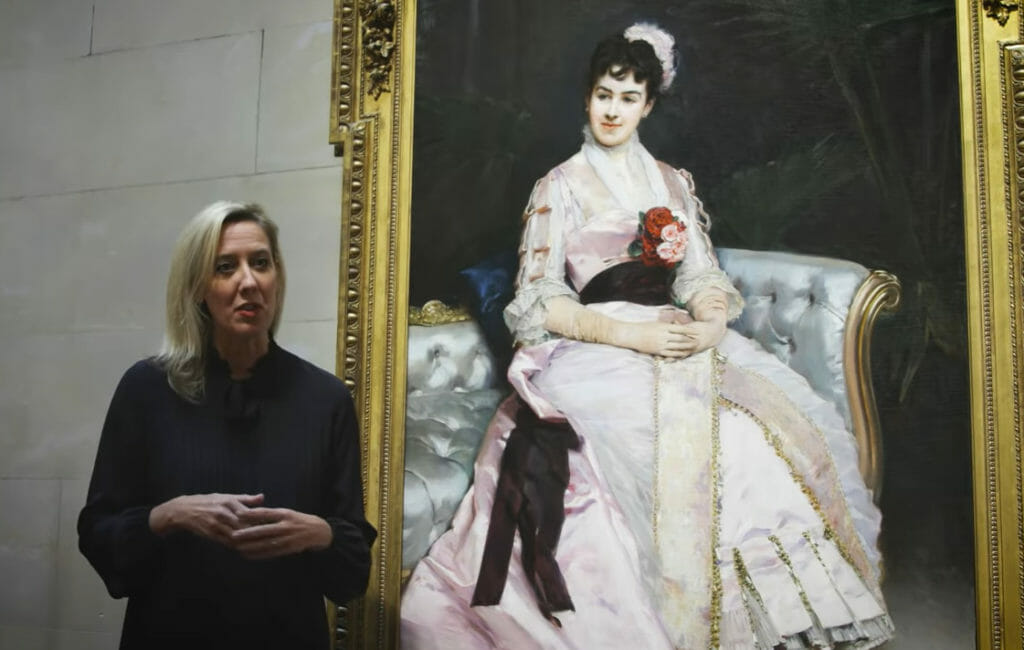
TC: (19:16) Alva Vanderbilt is a remarkable figure in history. 2020 marked the 100th anniversary of the passage of the 19th amendment. And part of the credit goes to Alva Vanderbilt’s leadership on this issue. She hosted several rallies here. And so it’s exhilarating – these rallies attracted women from all over the world. Some of the leading lights with the suffrage movement were speaking here, trying to rally others to get involved in the movement.
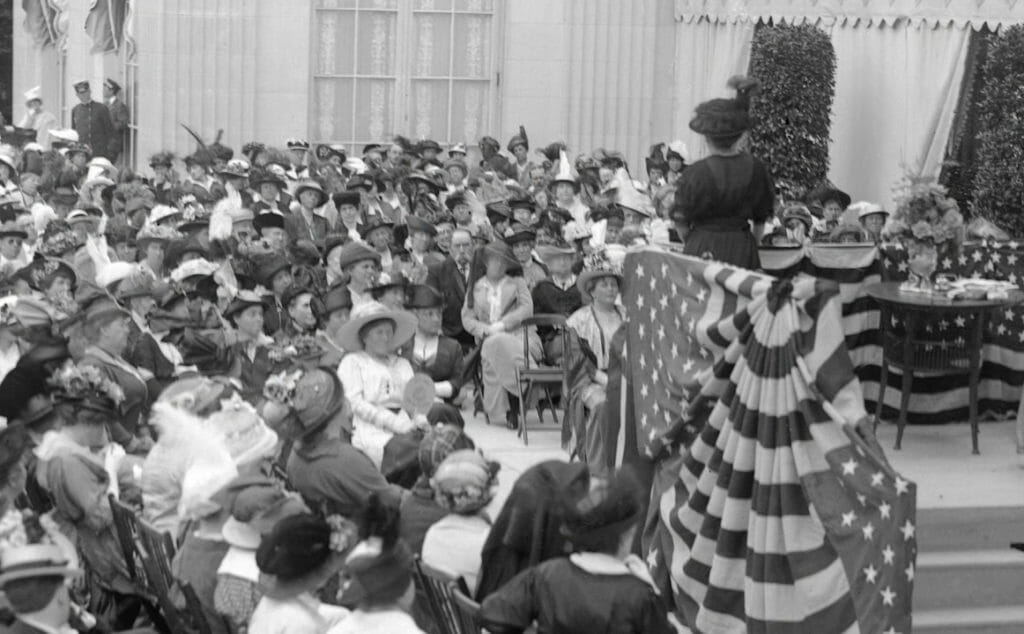
Consuela was one of Alva’s three children, and Alva put all of her heart, soul, and hope into Consuelo. Alva very much wanted to make sure that the Vanderbilt name was associated with royalty. That person turned out to be the Duke of Marlborough. This was not a marriage that either Consuelo or the Duke wanted. Consuelo was truly a philanthropist and also a volunteer par excellence. She did many, many duties around England and also in France and helping impoverished mothers and helping children that were in need.
Alice really met Cornelius Vanderbilt teaching Bible studies in Sunday school. And she was an active participant in the church, as was Cornelius. And yes, they did entertaining, but not in the scale that Alva and William did entertaining. She was I think, much more down to earth.
Gertrude Vanderbilt was, I think, most interesting in that she eschewed the social status of her parents. She was not at all interested in being a Vanderbilt. She really wanted to become engaged in the art world. And her collection became so vast – in the hundreds and hundreds of pieces – that she actually offered the collection up to the Metropolitan Museum of Art, along with the promise to build a wing to house this collection. And the Met turned her offer down. So what did she do? She went out and decided to found her own museum and that museum today is the Whitney. She, in her own right, was a great sculptress and produced pieces around the world. You can find them in Cody, Wyoming, you can find them off the coast of France. You can find them in New York City. So she really was an accomplished artist on top of being a collector.
JR: (10:14) In Alva Vanderbilt’s dining room when you had lunch with Alva, and when she had lunch with her children, only French could be spoken. Alva had a distinct attitude about the way Europeans looked at Americans because, from her experience of having grown up and been educated in France, she understood the Europeans pretty much thought of us as the hicks from the sticks. Well, this pretty much dispels that myth, doesn’t it?
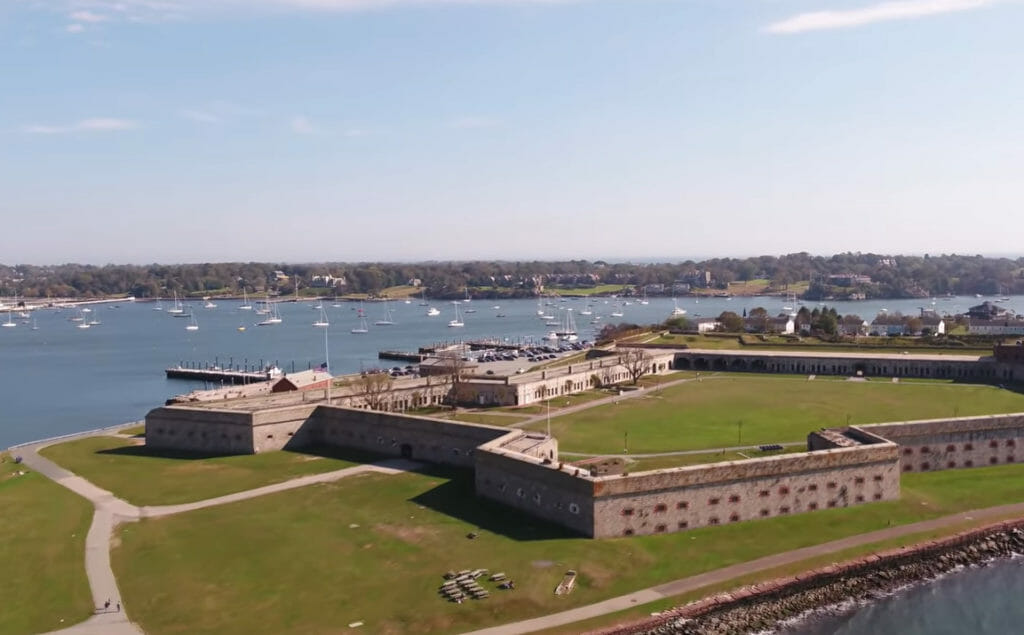
So, there’s plenty to do, see, learn, and experience in Newport. We merely scratched the surface during her visit. (We didn’t even get to experience the White Horse Tavern – the oldest operating restaurant in America, and the 10th oldest in the world!)
Be sure to give yourself enough time when planning your trip!


